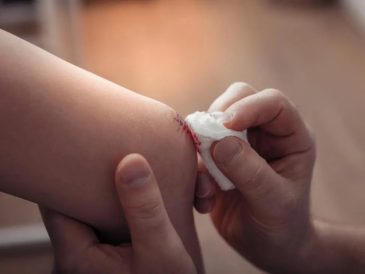
According to Dr. Curtis Cripe, biodegradable scaffolds and growth factors play a crucial role in tissue repair and regeneration. These innovations are essential in regenerative medicine, providing new solutions for repairing damaged tissues or organs. As research progresses, these strategies offer great promise in enhancing healing processes.
Biodegradable Scaffolds
A biodegradable scaffold is a temporary structure that supports the growth and development of new tissue. Typically made from natural or synthetic materials, these scaffolds mimic the extracellular matrix (ECM), offering structural support for cells to grow and proliferate. As the new tissue forms, the scaffold gradually degrades, eliminating the need for surgical removal.
- Types of Scaffolds: Common materials for scaffolds include collagen, hyaluronic acid, and polylactic acid. These materials are chosen based on their bio-compatibility and ability to degrade at controlled rates.
- Design Considerations: Scaffold design is crucial for tissue regeneration. Factors such as porosity, surface area, and mechanical strength affect cell adhesion, growth, and tissue formation.
- Applications: Biodegradable scaffolds have been used in various fields, including bone, cartilage, and skin repair. They provide the necessary structure for cells to organize into functional tissue.
Growth Factors
Growth factors are signaling proteins that regulate cell growth, differentiation, and healing. According to Dr. Curtis Cripe, in tissue repair, growth factors promote the regeneration of specific tissues by stimulating cell activity and guiding them to their intended locations.
- Role in Tissue Repair: Growth factors enhance cell migration, angiogenesis (formation of new blood vessels), and tissue regeneration. Common growth factors used in tissue repair include platelet-derived growth factor (PDGF), fibroblast growth factor (FGF), and transforming growth factor-beta (TGF-β).
- Combination with Scaffolds: The incorporation of growth factors into biodegradable scaffolds optimizes tissue repair. Scaffolds can be engineered to release growth factors in a controlled manner, ensuring the appropriate signals are provided over time.
- Clinical Impact: The use of growth factors in combination with scaffolds accelerates tissue healing and improves the functional outcomes of regenerative procedures.
Advantages of Using Both Scaffolds and Growth Factors
Combining biodegradable scaffolds with growth factors offers several advantages in tissue repair:
- Enhanced Regeneration: Scaffolds provide the physical framework, while growth factors stimulate cell activity, leading to faster and more efficient tissue regeneration.
- Reduced Scar Formation: Proper tissue repair can minimize scar tissue, especially in sensitive areas such as the skin and organs.
- Tailored Treatments: By customizing scaffolds and growth factor combinations, treatments can be tailored to the specific needs of the patient or tissue type.
Challenges and Future Directions
Despite the promising potential, there are challenges in using biodegradable scaffolds and growth factors in tissue repair. The optimal design of scaffolds, the selection of appropriate growth factors, and the control of their release remain active areas of research. Future developments may lead to more effective treatments with fewer side effects.
Advancements in nanotechnology and bio-materials science hold the potential to improve the efficacy of scaffolds and growth factors. The goal is to create more functional, patient-specific solutions for tissue repair that can be widely applied in clinical settings.
Biodegradable scaffolds and growth factors represent a significant leap forward in tissue repair, as per Dr. Curtis Cripe. Their combined use is paving the way for more effective treatments in regenerative medicine, offering hope for patients with severe tissue injuries or diseases. Continued research and development in this field will further unlock their full potential, improving the quality of life for many individuals.




